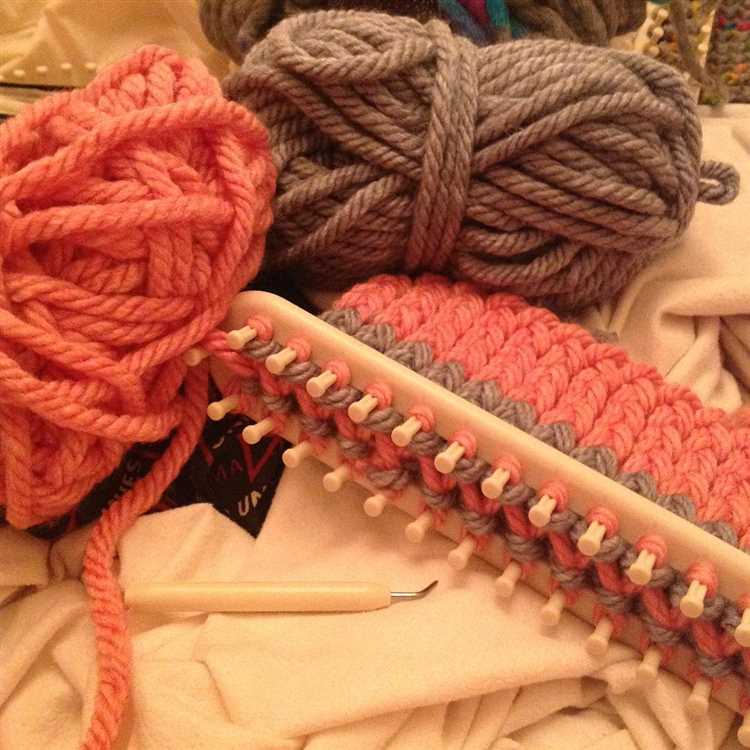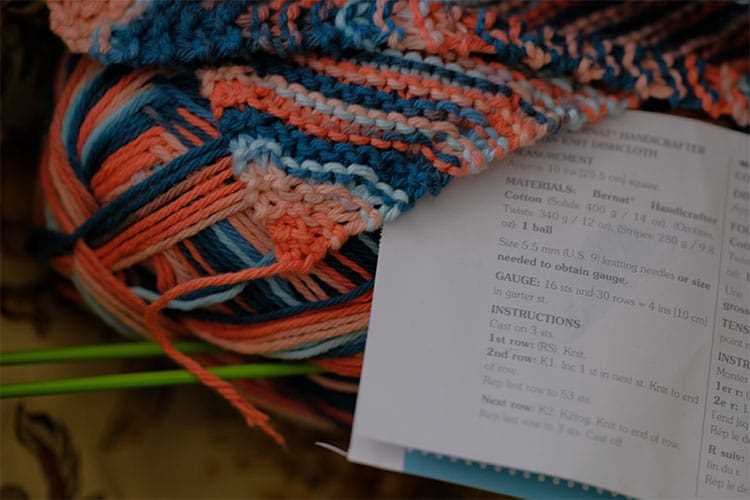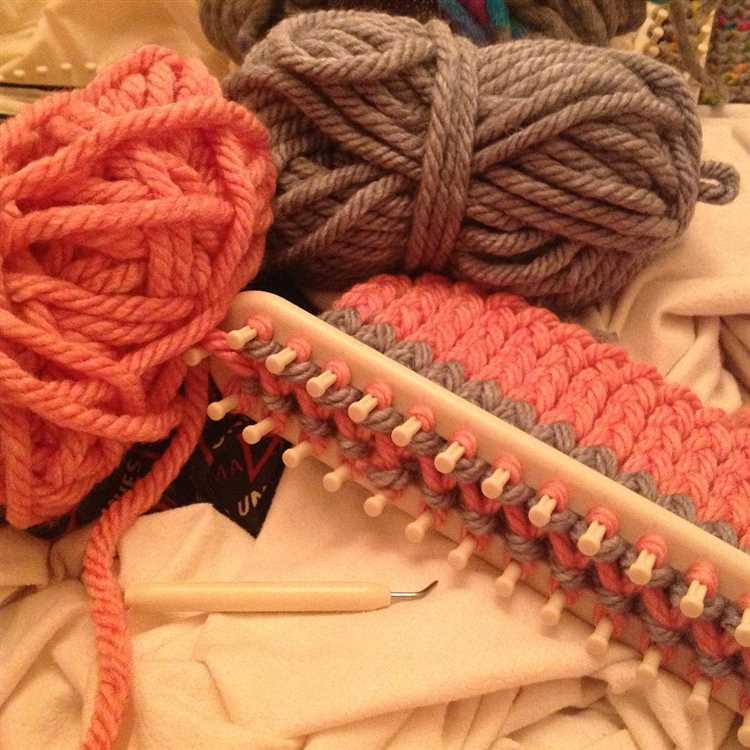When it comes to selecting a fiber craft hobby, many people find themselves debating between crochet and knitting. Both crafts involve using yarn and creating beautiful handmade items, but which one is easier? In this article, we will compare the two crafts and explore the different skills required, the learning curve, and the possibilities for creativity.
One key difference between crochet and knitting lies in the tools used. Crochet requires a single hook with a pointed end, whereas knitting utilizes two needles. The simplicity of the crochet hook can make it easier for beginners to grasp and manipulate the yarn. The technique of crochet involves using a single hook to create different stitches and patterns, making it particularly suitable for those who prefer a more structured approach to crafting.
On the other hand, knitting involves working with two needles, which can be initially more challenging to coordinate. However, knitting offers a wider variety of stitch patterns and techniques once the basic skills are mastered. Knitting can be especially appealing to individuals who enjoy a more fluid and rhythmical process, as it often involves repetitive motions.
Another factor to consider is the learning curve. While both crochet and knitting require practice and patience to become proficient, many find that crochet is easier to pick up initially. The basic stitches in crochet, such as chain, single crochet, and double crochet, are relatively simple to learn. In knitting, the initial learning curve is often steeper due to the need to coordinate the movements of two needles and manage multiple stitches at once.
However, as mentioned earlier, knitting offers a wider range of advanced techniques and stitch patterns. Once the basics are mastered, knitters can explore lacework, cables, colorwork, and many other intricate designs. Crochet also offers a variety of advanced techniques, but the range and complexity are generally considered to be broader in knitting.
In conclusion, the easier craft between crochet and knitting largely depends on personal preference and learning style. Crochet may be easier to pick up initially due to the simplicity of the tools and basic stitches. Knitting may have a steeper learning curve, but it offers a wider range of advanced techniques and stitch patterns. Ultimately, both crafts can be incredibly rewarding and enjoyable, with the potential for endless creativity.
What are knitting and crochet?
Knitting and crochet are two popular forms of needlecraft that involve creating fabric and designs using yarn and a needle or hook.
Knitting:
- Knitting is a technique where loops of yarn are interlocked to create a fabric.
- Typically, a pair of long, thin needles with pointed ends is used in knitting.
- Knitting is known for its versatility, allowing for various stitch patterns and designs.
- It is a commonly used technique for creating warm garments such as sweaters, scarves, and hats.
Crochet:
- Crochet involves creating fabric by interlocking loops of yarn using a small, hooked needle.
- A crochet hook, which is smaller and has a single hook on one end, is used in crochet.
- Crochet is often used to create detailed designs and intricate lace patterns.
- It is a versatile craft, suitable for making garments, accessories, and home decor items.
Both knitting and crochet have their own unique characteristics and techniques, and each offers a different creative experience. Some people find knitting easier to pick up due to its slower pace and repetitive nature, while others prefer the versatility and speed of crochet. Ultimately, the choice between knitting and crochet comes down to personal preference and the desired outcome of the project.
Historical background of knitting and crochet
Knitting and crochet are two ancient crafts that have been practiced for centuries. Both crafts involve the use of yarn and needles or hooks to create fabric, but they have distinct origins and histories.
Knitting is believed to have originated in the Middle East during the 5th century. The oldest knitted items that have been discovered date back to this time period. The craft then spread to Europe, where it became a popular technique for creating warm clothing and accessories. Knitting guilds were established in the 13th century, and patterns and techniques were passed down through generations.
Crochet, on the other hand, has a more recent history. The origins of crochet can be traced back to the early 19th century in Europe. It is believed to have developed from traditional embroidery techniques, as a way to create lace-like fabric using a single hook instead of multiple needles. Crochet became particularly popular in Ireland, where it was used to create intricate lace patterns.
Both knitting and crochet continued to evolve and gain popularity over the years. They were often passed down through families or taught in community settings. Knitting and crochet patterns and techniques were published in magazines and books, allowing for further innovation and creativity.
Today, knitting and crochet continue to be beloved crafts practiced by people all over the world. They offer opportunities for self-expression, creativity, and relaxation. Whether you choose to knit or crochet, both crafts provide a way to create beautiful and functional items with just a few simple tools.
Comparing knitting and crochet
Knitting and crochet are both popular crafts that involve creating fabric from yarn or thread by creating loops and interlocking them in various ways. While they share similarities, there are also some key differences between the two techniques.
Tools and materials:
- Knitting: Knitting utilizes two long needles, usually made of metal, bamboo, or plastic. These needles are used to create stitches by looping and manipulating the yarn.
- Crochet: Crochet, on the other hand, uses a single hook made of metal, plastic, or wood. The hook is used to pull the yarn through loops to create stitches.
Stitches and fabric:
- Knitting: Knitting primarily uses two basic stitches: knit stitches and purl stitches. These stitches are combined in different combinations to create various patterns and textures. The resulting fabric of knitting is typically elastic and drapes well.
- Crochet: Crochet offers a wider variety of stitches, including chain stitches, single crochet, double crochet, and many more. Crocheted fabric tends to be thicker and stiffer than knitted fabric.
Complexity and learning curve:
- Knitting: Knitting is often considered more complex and has a steeper learning curve. It requires keeping track of multiple stitches and manipulating the needles to create different stitch patterns. Many knitters find it easier to fix mistakes in knitting.
- Crochet: Crochet is generally considered easier to learn, as it involves working with one stitch at a time. Mistakes in crochet are also easier to fix, as stitches can be unraveled individually. Crochet allows for more flexibility and spontaneity in creating shapes and designs.
Applications:
- Knitting: Knitting is often favored for creating garments such as sweaters, scarves, and hats. The stretchiness of knitted fabric makes it ideal for clothing items that need to fit snugly.
- Crochet: Crochet is popular for making blankets, home decor items, and accessories like bags and hats. The stiffer and thicker fabric created by crochet lends itself well to these types of projects.
In conclusion, knitting and crochet are both enjoyable crafts, but they offer different benefits and outcomes. While knitting may be more intricate and elastic, crochet is often easier to learn and allows for more creativity. The choice between the two ultimately depends on personal preference and the desired final product.
Basic techniques of knitting and crochet
Both knitting and crochet are crafts that involve creating fabric by interlacing yarn or thread with special tools. While they have similarities, they also have distinct techniques and characteristics.
Knitting
Knitting is the process of creating fabric by pulling loops of yarn through other loops. The basic techniques of knitting include:
- Casting on: This is the first step in knitting, where stitches are made on the knitting needle to create the initial row.
- Knit stitch: This is the most basic stitch in knitting, where the working yarn is pulled through the loop on the needle to create a new loop.
- Purl stitch: This is another basic stitch in knitting, where the working yarn is pulled through the loop from the opposite side of the fabric, creating a different texture.
- Increasing: This involves adding stitches to the fabric, typically by making yarn overs or knitting into the same stitch multiple times.
- Decreasing: This involves reducing the number of stitches in the fabric, typically by knitting or purling stitches together.
Crochet
Crochet is the process of creating fabric by interlocking loops of yarn or thread with a crochet hook. The basic techniques of crochet include:
- Creating a slip knot: This is the first step in crochet, where a loop is created to secure the yarn on the crochet hook.
- Chain stitch: This is the most basic stitch in crochet, where new stitches are created by pulling the yarn through the loop on the hook.
- Single crochet: This stitch involves inserting the hook into the fabric, pulling the yarn through, and then pulling the yarn through both loops on the hook.
- Double crochet: Similar to single crochet, but with an extra step of yarn wrapping and pulling through multiple loops.
- Increasing: Adding stitches to the fabric, typically by making multiple stitches in the same stitch or working into the space between stitches.
- Decreasing: Reducing the number of stitches in the fabric, typically by crocheting multiple stitches together or skipping stitches.
Both knitting and crochet allow for a wide variety of stitches and techniques, allowing crafters to create intricate and detailed designs. Both crafts have their own unique advantages and challenges, and many crafters enjoy both for different reasons.
Materials and Tools Used in Knitting and Crochet
Both knitting and crochet require a few basic materials and tools to get started. While the end result may look different, the items needed for each craft are quite similar.
Materials:
- Yarn: Yarn is the main material used in knitting and crochet. It comes in a variety of colors, fibers, and thicknesses.
- Knitting Needles: Knitting needles come in different sizes and materials. They are used to create loops with the yarn in knitting.
- Crochet Hooks: Crochet hooks also come in different sizes and materials. They have a hook at one end to pull the yarn through loops in crochet.
Tools:
- Tape Measure: A tape measure is helpful for checking gauge and measuring the length of your project.
- Scissors: Scissors are necessary for cutting yarn and trimming ends.
- Yarn Needles: Yarn needles, also known as tapestry needles, are used for weaving in loose ends and sewing pieces together.
- Stitch Markers: Stitch markers are used to mark specific stitches or sections in your project.
Knitting and crochet can also involve additional tools depending on the complexity of the project. Some examples include cable needles, stitch holders, and row counters.
Differences:
| Knitting | Crochet |
|---|---|
| Uses two knitting needles | Uses a single crochet hook |
| Creates stitches through loops | Creates stitches with a yarn-over and pull through |
| Stitches are held on the needle | Stitches are worked one at a time |
| One row is worked at a time | One stitch or group of stitches is worked at a time |
| Produces a smoother, more even fabric | Produces a thicker and textured fabric |
Ultimately, the choice between knitting and crochet depends on personal preference and the desired outcome. Some people find knitting easier to learn, while others prefer the versatility and faster stitch production of crochet. Both crafts offer a wide range of possibilities for creating beautiful and functional items.
Differences in the finished products
When comparing crochet and knitting, one of the key differences lies in the finished products that each craft produces. Both crochet and knitting can create beautiful and intricate items, but they have distinct characteristics that set them apart.
Crochet:
- Structure: Crochet stitches are typically more compact and dense compared to knitting. This gives crocheted items a sturdier and more solid structure.
- Texture: Crocheted fabrics often have a more textured appearance due to the nature of the stitches. The individual stitches create unique patterns and textures on the surface of the fabric.
- Thickness: Crocheted items tend to be thicker and heavier than knitted ones due to the density of the stitches. This makes them great for creating warm and cozy accessories like scarves and blankets.
- Flexibility: Crochet stitches are inherently more flexible and can stretch further than knitting stitches. This allows crocheted items to have more drape and movement.
Knitting:
- Structure: Knitted fabrics have a more fluid and elastic structure compared to crochet. The stitches have more give and stretch, resulting in a fabric that can conform to different shapes and sizes.
- Smoothness: Knitting produces a smoother and more even surface compared to crochet. The stitches in knitting are typically smaller and more uniform, creating a polished and refined look.
- Lightweight: Knitted items are generally lighter in weight compared to crocheted ones. The looser tension and thinner yarn used in knitting contribute to a lightweight fabric that is perfect for garments like sweaters and shawls.
- Elasticity: Knitting stitches have more inherent stretch, allowing knitted items to retain their shape and bounce back to the original form after stretching. This elasticity makes knitted garments comfortable and easy to wear.
Ultimately, the choice between crochet and knitting depends on personal preference and the desired outcome. Both crafts offer unique and beautiful results, allowing crafters to create a wide range of items to suit their needs and style.
Which is easier to learn: knitting or crochet?
When it comes to learning a new craft, the difficulty level can vary depending on the individual’s personal preferences and learning style. However, there are some general observations that can be made about the ease of learning knitting versus crochet.
Knitting:
- Knitting typically involves working with two knitting needles, which can be easier for some people to handle and control compared to crochet hooks.
- The basic stitches in knitting, such as the knit stitch and purl stitch, are relatively straightforward and can be easily mastered with practice.
- Knitting projects often require more attention to detail and precision, as the stitches are typically tighter and smaller.
- However, some beginners may find it challenging to fix mistakes in knitting, such as dropped stitches, as it requires undoing previous rows.
Crochet:
- Crochet uses a single crochet hook, which can be easier for some people to hold and maneuver compared to knitting needles.
- The basic stitches in crochet, such as the chain stitch and single crochet stitch, can be quickly learned and allow for more flexibility and creativity in design.
- Crochet projects often progress faster than knitting projects, as the stitches are generally larger and looser.
- Fixing mistakes in crochet is usually easier, as it often involves unraveling a few stitches rather than undoing entire rows.
Ultimately, whether knitting or crochet is easier to learn depends on the individual’s personal preferences and learning style. Some people may find knitting more intuitive, while others may prefer the versatility and ease of crochet. It can be helpful to try both crafts and see which one resonates more with your interests and abilities.
FAQ:
Which craft is easier for beginners – crochet or knitting?
Both crochet and knitting have their own learning curves, but many people find crochet to be easier for beginners. Crochet uses only one hook and involves working with fewer stitches and techniques. Knitting, on the other hand, uses two needles and involves more complex stitches and techniques.
Is it true that knitting is slower than crochet?
It depends on the individual and their skill level. Some people find knitting to be slower because it involves using two needles, whereas crochet involves using only one hook. However, others find knitting to be faster once they become proficient in the technique.
Can you create more intricate and detailed projects with crochet or knitting?
Both crochet and knitting can be used to create intricate and detailed projects. However, crochet is often seen as more suitable for creating intricate designs and delicate lacework due to the ability to easily create different stitch patterns and shapes.
Which craft requires less materials – crochet or knitting?
Crochet generally requires less materials than knitting. Crochet uses individual stitches, allowing for tighter and denser fabric, which means less yarn is required to complete a project. Knitting, on the other hand, creates a looser fabric and often requires more yarn to achieve the same size and thickness.
Is it easier to fix mistakes in crochet or knitting?
Fixing mistakes in crochet is often easier than in knitting. In crochet, individual stitches can be easily unravelled and corrected without affecting the entire project. In knitting, mistakes can be more complicated to fix, especially if they involve dropped or twisted stitches that can affect the whole row or section.


